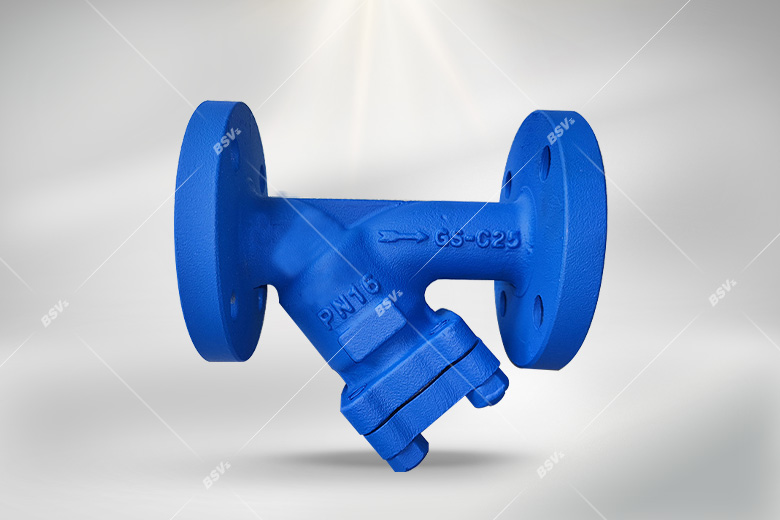Release time:2025-03-11Clicks:
Strainers are essential components in many industrial and residential systems, playing a crucial role in filtering out debris, dirt, and unwanted particles from liquids or gases. Over time, however, strainers can accumulate buildup, which not only reduces their efficiency but can also lead to hygiene concerns. At Lishui BSV Valves Supplier, we understand the importance of maintaining clean and efficient strainers for both safety and performance. In this article, we’ll guide you through the best practices for cleaning your strainer to ensure maximum hygiene and optimal functionality.
Strainers are often exposed to a variety of contaminants, including dirt, rust, sludge, and other particulates. Without regular cleaning, these contaminants can clog the strainer, leading to reduced flow rates, system inefficiencies, and potential damage to downstream equipment. Furthermore, in industries such as food processing, pharmaceuticals, and water treatment, unclean strainers can become breeding grounds for bacteria and other harmful microorganisms, posing serious hygiene risks.
At Lishui BSV Valves Supplier, we emphasize that regular maintenance and cleaning of strainers not only extend their lifespan but also ensure compliance with hygiene and safety standards. Whether you’re working with industrial Y-strainers, T-strainers, or basket strainers, our tips will help you maintain their cleanliness and efficiency.
Before diving into the cleaning process, it’s important to gather the necessary tools and materials. Having everything on hand will make the process smoother and more efficient. Here’s what you’ll need:

Once you have these tools ready, you can proceed with the cleaning process. Remember, safety comes first, so always wear protective gear when handling cleaning chemicals or working with machinery.
Before cleaning the strainer, ensure that the system it’s connected to is turned off and depressurized. This is a critical safety step to prevent accidents or injuries. If the strainer is part of a pipeline, close the upstream and downstream valves to isolate it from the system.
Carefully detach the strainer from the system. Depending on the type of strainer you’re working with, this may involve loosening bolts, unscrewing caps, or disconnecting flanges. At Lishui BSV Valves Supplier, we recommend consulting the manufacturer’s manual for specific instructions on removing your strainer model.
Once the strainer is removed, inspect it for visible damage, such as cracks, holes, or excessive wear. Pay close attention to the mesh or perforations, as these are the most critical parts of the strainer. If you notice any damage, it may be time to replace the strainer or its components.
Before using cleaning solutions, remove large debris and particles from the strainer manually. Use a soft-bristle brush to gently scrub away dirt and sludge. Be careful not to damage the mesh or perforations during this step.
Prepare a cleaning solution in a bucket or container. For most applications, a mixture of warm water and mild detergent will suffice. However, for industrial strainers exposed to oil, grease, or chemical residues, you may need a specialized industrial cleaner. Submerge the strainer in the solution and let it soak for 15-30 minutes, depending on the level of buildup.
After soaking, use the soft-bristle brush to scrub the strainer thoroughly. Focus on the mesh or perforations, as these areas are prone to clogging. Rinse the strainer under running water to remove any remaining debris and cleaning solution. For stubborn residues, you can use a high-pressure water jet or compressed air.
Dry the strainer completely before reinstalling it. Use a lint-free cloth or microfiber towel to remove excess moisture. If available, compressed air can be used to dry hard-to-reach areas. Ensure that no water or cleaning solution remains, as this could lead to corrosion or contamination.
Before reassembling the strainer, inspect it once more to ensure it’s clean and free of damage. Check the gaskets or seals and replace them if necessary. Reinstall the strainer into the system, following the manufacturer’s guidelines.
Once the strainer is reinstalled, turn the system back on and check for leaks or irregularities. Monitor the strainer’s performance to ensure it’s functioning properly. If you notice any issues, consult a professional technician or contact Lishui BSV Valves Supplier for assistance.

To keep your strainer in top condition, follow these maintenance tips:
Cleaning your strainer is a vital part of maintaining your system’s efficiency and hygiene. By following the steps outlined in this guide and using high-quality products from Lishui BSV Valves Supplier, you can ensure that your strainer performs optimally and meets hygiene standards. Regular maintenance not only extends the lifespan of your strainer but also protects your equipment and processes from potential damage or contamination.
At Lishui BSV Valves Supplier, we’re committed to providing top-notch valves, strainers, and maintenance solutions for a wide range of industries. Contact us today to learn more about our products and services, and let us help you keep your systems running smoothly and hygienically.
Tags:Butterfly Valve,Gate Valve,Ball Valve